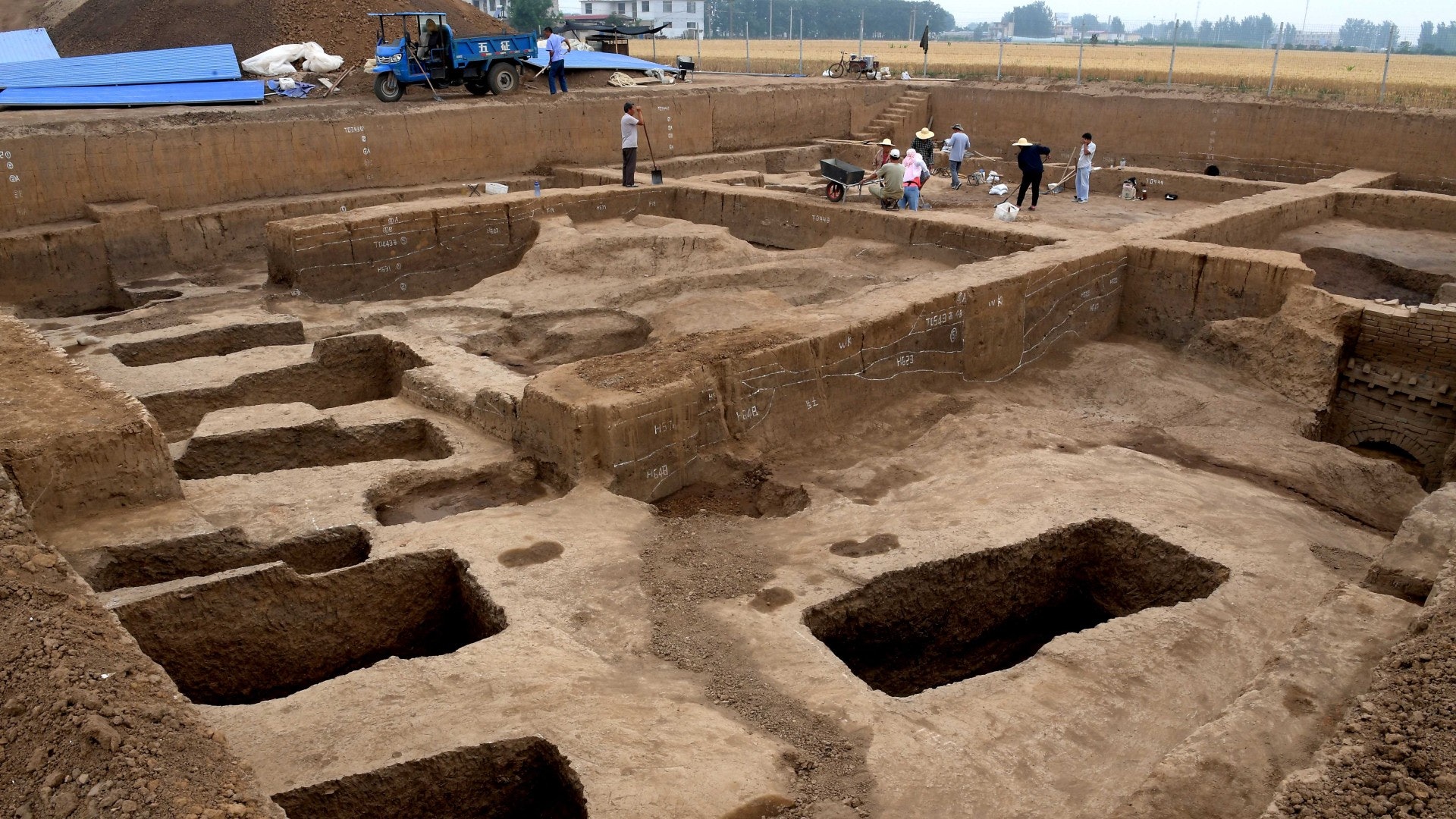The bronze ware of the Shang Dynasty, represented by the “Simu Ding Ding”, is highly praised for its beautiful shape and gorgeous decoration. However, modern people know little about the creators and production processes of these fine art.
Recently, archaeologists have discovered a cemetery of a cast copper craftsman family in the Yubei Mall in Anyang, Henan Province. It is located near the Yin Ruins site of the Shang Dynasty and may help to unravel the secrets of the Shang Dynasty bronze ware.
It is understood that the Yubei Mall, which was discovered in the northeast of the Yinxu Reserve in 1999, was the capital of the middle of the Shang Dynasty. Since 2014, the Anyang Workstation of the Institute of Archaeology of the Chinese Academy of Social Sciences has been excavating in the Taipei City Mall to explore its layout. And in August 2015, about 570 meters north of the northern wall of Miyagi, archaeologists first discovered the blaster for melting copper and unveiled a medium-term copper-casting workshop for the Shang Dynasty, which was controlled by the royal family and produced bronze rituals for the ruling class. Mysterious veil.
“The tombs are arranged in an orderly manner and have certain planning, showing the characteristics of the family cemetery.” He Yuling, the deputy stationmaster, introduced 42 artisan tombs in the Taipei City Mall. After excavation, it was determined to be the same copper casting activity. The family is the first time that China has clearly discovered the cemetery of the bronze craftsman family in the Shang Dynasty. Most of the tombs have been found in the pottery used in casting bronzes (ie, impressions, which are molds made from clay), copper knives, grindstones and other tools. In particular, Tao Fan was discovered for the first time as a funerary, so it is possible to determine the identity of the tomb as a cast copper craftsman.
One of the largest tombs has a plaque, and there are burial dogs and a pile of pottery on the second floor of the squatting room, which can clearly distinguish the foundry of the bronze gongs (ancient wine glasses). Archaeologists speculate that the owner of the tomb may be the patriarch of the craftsman family.
He Yuling said that the successful exploration of the artisan tombs laid a solid foundation for the study of the production organization, management and operation of the bronze wares of the Shang Dynasty, as well as the ranks and status of the artisans, the inheritance of production technology and innovation. Among the unearthed artifacts, the most special one is a small copper tripod model, which depicts the dividing line, marking where the pattern should be drawn. It is speculated that the craftsman used it for research before making a new bronze.
According to the operational chain theory of handicraft production, archaeologists have gradually identified the pottery making area, the bronze smelting and casting area, the production waste accumulation area, and the person-related pits that may be related to production. The head of the bull and the horns of the horns.












